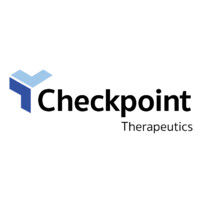预约演示
更新于:2025-05-07
Eye Neoplasms
眼肿瘤
更新于:2025-05-07
基本信息
别名 Cancer of Eye、Cancer of the Eye、Cancer, Eye + [95] |
简介 Tumors or cancer of the EYE. |
关联
212
项与 眼肿瘤 相关的药物靶点 |
作用机制 PDL1抑制剂 [+2] |
最高研发阶段批准上市 |
首次获批国家/地区 美国 |
首次获批日期2024-12-13 |
靶点 |
作用机制 HDAC抑制剂 |
原研机构 |
在研适应症 |
最高研发阶段批准上市 |
首次获批国家/地区 中国 |
首次获批日期2024-04-24 |
靶点- |
作用机制 免疫细胞毒性 [+1] |
非在研适应症- |
最高研发阶段批准上市 |
首次获批国家/地区 美国 |
首次获批日期2024-02-16 |
652
项与 眼肿瘤 相关的临床试验NCT06498648
Phase I/II Study to Evaluate the Feasibility and Efficacy of Sequential Abemaciclib and Gemcitabine Treatment in Patients With Retinoblastoma (Rb)+ Sarcomas
This phase 1/2 trial tests the side effects and best dose of abemaciclib when added to gemcitabine and compares the effectiveness of that treatment to the usual treatment of gemcitabine with docetaxel for the treatment of patients with soft tissue sarcoma that may have spread from where it first started to nearby tissue, lymph nodes, or distant parts of the body (advanced) or that has spread from where it first started (primary site) to other places in the body (metastatic) (phase 1) or patients with leiomyosarcoma or dedifferentiated liposarcoma (phase 2). Abemaciclib is in a class of medications called kinase inhibitors. It works by blocking the action of an abnormal protein that signals tumor cells to multiply. This helps slow or stop the spread of tumor cells. Gemcitabine is a chemotherapy drug that blocks the cells from making DNA and may kill tumor cells. Docetaxel is in a class of medications called taxanes. It stops cancer cells from growing and dividing and may kill them. Giving abemaciclib with gemcitabine may be safe and effective when compared to treatment with gemcitabine and docetaxel for patients with advanced or metastatic soft tissue sarcoma or leiomyosarcoma or dedifferentiated liposarcoma.
开始日期2025-10-14 |
申办/合作机构 |
NCT04381897
Use of N-Acetylcysteine (NAC) in the Treatment of Repetitive Behaviors (RB) and Self-Injurious Behaviors (SIB) in Cornelia de Lange Syndrome: A Randomized Double-Blind Placebo-Controlled Pilot Study
This research project is a randomized cross-over pilot trial which aims to test the efficacy of N-acetylcysteine (NAC) for the treatment of Repetitive Behaviors (RB) and self-injurious behavior (SIB) in patients with Cornelia de Lange Syndrome (CdLs).
NAC is a known anti-oxidative stress and neuroprotective agent, which has been shown to decrease the occurrence of SIB such as skin picking. NAC has also shown partial response in trials for compulsive behaviors in Obsessive Compulsive Disorder (OCD) and related disorders in autism.
Cornelia de Lange syndrome (CdLS) is a genetic disorder with autistic features, including RBs and SIB. In this randomized clinical trial, participants with CdLS will be blindly assigned one of two possible treatment arms: 1) placebo (8 weeks) and NAC (8 weeks); or 2) NAC (8 weeks) and placebo (8 weeks), with an intermediate 2-week washout period.
NAC is a known anti-oxidative stress and neuroprotective agent, which has been shown to decrease the occurrence of SIB such as skin picking. NAC has also shown partial response in trials for compulsive behaviors in Obsessive Compulsive Disorder (OCD) and related disorders in autism.
Cornelia de Lange syndrome (CdLS) is a genetic disorder with autistic features, including RBs and SIB. In this randomized clinical trial, participants with CdLS will be blindly assigned one of two possible treatment arms: 1) placebo (8 weeks) and NAC (8 weeks); or 2) NAC (8 weeks) and placebo (8 weeks), with an intermediate 2-week washout period.
开始日期2025-10-01 |
申办/合作机构 |
NCT06932757
Phase 2 Trial of Adjuvant Quisinostat in High-Risk Uveal Melanoma
The purpose of this study is to see if giving participants quisinostat will prevent participants' uveal melanoma tumor from spreading. The researchers want to find out the effects that quisinostat has on participants' condition.
开始日期2025-06-01 |
申办/合作机构  University of Miami University of Miami [+1] |
100 项与 眼肿瘤 相关的临床结果
登录后查看更多信息
100 项与 眼肿瘤 相关的转化医学
登录后查看更多信息
0 项与 眼肿瘤 相关的专利(医药)
登录后查看更多信息
29,719
项与 眼肿瘤 相关的文献(医药)2025-12-01·Molecular Biology Reports
Investigation of GD2 synthase as a potential marker for retinoblastoma poor prognosis
Article
作者: Shanthi, Radhakrishnan ; Kim, Usha ; Sethu Nagarajan, Rathinavel ; Vanniarajan, Ayyasamy
2025-08-01·Tissue and Cell
The role of lactate metabolism in retinoblastoma tumorigenesis and ferroptosis resistance
Article
作者: Gao, Yang ; Cheng, Chao ; Lu, Rong ; Ai, Siming ; Tang, Junjie ; Liu, Yaoming ; Li, Jinmiao ; Chen, Shuxia ; Zhang, Ping ; Zhang, Zhihui ; Wang, Yinghao ; Su, Shicai
2025-08-01·Biomaterials
A novel FTO-targeting nanodrug induces disulfidptosis and ameliorates the suppressive tumor immune environment to treat uveal melanoma
Article
作者: Deng, Hongpei ; Liu, Xinlong ; Zhang, Chuan ; Tian, Hao ; Liu, Chang ; Ruan, Jing ; Fan, Xianqun ; Leong, Kam W
1,001
项与 眼肿瘤 相关的新闻(医药)2025-05-01
·生物世界
撰文丨王聪编辑丨王多鱼排版丨水成文致癌突变在正常人体组织中普遍存在,人体内有着数万亿个细胞,致癌突变在这些正常细胞中突变存在,然而,这些致癌突变通常并不会引起癌症,这也导致了癌症实际上并不常见。同样,在小鼠嵌合体中,携带致癌突变的细胞能为成年组织提供正常细胞,而不会引发癌症。那些通过正常发育而避开癌症的细胞谱系与少数最终罹患癌症的细胞谱系有何不同,目前尚不清楚。2025 年 4 月 30 日,四川大学华西医院陈大年教授作为第一作者,联合多伦多大学西奈山医院 Rod Bremner 教授团队在国际顶尖学术期刊 Nature 上发表了题为:Cell cycle duration determines oncogenic transformation capacity 的研究论文。该研究发现,细胞分裂周期在易患癌的细胞类型中更快,证实了细胞周期快是新发现的癌症易感性预测指标。肿瘤具有典型的癌症特征;因此,研究团队寻找了区分易患癌症的细胞谱系和抗性细胞谱系的特征。在这项最新研究中,研究团队发现,总细胞周期持续时间(Tc)可预测多种肿瘤类型的转化易感性。易患癌症的 Rb 和 p107 缺陷的视网膜(Rb 又称 Rb1, p107 又称 Rbl1)在细胞凋亡、衰老、免疫监视、血管生成、DNA 修复、极性和增殖等方面存在缺陷。干扰 SKP2-p27-CDK2/CDK1 轴能够阻断癌症,且不影响这些特征。因此,癌症的形成不仅仅取决于其标志性特征的存在。值得注意的是,研究团队测试的每一个肿瘤抑制突变都增加了 Tc,而视网膜母细胞瘤细胞起源细胞的 Tc 是耐药谱系的一半。Tc 还区分了 Rb-/- 垂体癌的起源细胞。在肺部,Rb 和 p53 的缺失会将神经内分泌细胞转化,而 KrasG12D 或 BrafV600E 突变则会将肺泡Ⅱ型细胞转化。最短的 Tc 始终能确定细胞起源,无论突变发生的时间如何。因此,相对 Tc 是一个标志,它在多种情况下区分了易患癌和抗癌的细胞谱系,解释了突变细胞如何在不引发细胞凋亡、衰老或免疫监视的情况下逃脱转化。总的来说,该研究发现了易患癌细胞的共同特征——它们的细胞分裂周期比抗肿瘤细胞更快。Nature 期刊同期配发了题为:The cell-division cycle is faster in cell types prone to forming cancer 的新闻与评论文章,该文章指出,易患癌的细胞相比抗癌细胞的分裂周期更快,细胞周期快可作为一种癌症易感性预测的新指标。论文链接:https://www.nature.com/articles/s41586-025-08935-x设置星标,不错过精彩推文开放转载欢迎转发到朋友圈和微信群 微信加群 为促进前沿研究的传播和交流,我们组建了多个专业交流群,长按下方二维码,即可添加小编微信进群,由于申请人数较多,添加微信时请备注:学校/专业/姓名,如果是PI/教授,还请注明。点在看,传递你的品味
临床1期临床研究
2025-04-28
FRIENDSWOOD, Texas, April 28, 2025 (GLOBE NEWSWIRE) -- Castle Biosciences, Inc. (Nasdaq: CSTL), a company improving health through innovative tests that guide patient care, today announced its achievement of surpassing a significant milestone of 200,000 DecisionDx-Melanoma clinical test orders. DecisionDx-Melanoma is a 31-gene expression profile test that provides comprehensive, personalized results designed to improve risk-aligned management decisions for patients with stage I-III cutaneous melanoma. “We are excited by this milestone, which we believe is a testament to our shared desire with the melanoma healthcare community to improve the lives of patients,” said Derek Maetzold, president and chief executive officer of Castle Biosciences. “With every DecisionDx-Melanoma test, we aim to enable clinicians to make more informed, more precise treatment decisions that can improve patient outcomes.” Hear more from Maetzold and patients whose lives have been impacted by the DecisionDx-Melanoma test in this video. By harnessing the genetic information within a patient’s tumor biology and incorporating traditional clinicopathologic features, DecisionDx-Melanoma is designed to stratify patient risk and provide personalized results regarding a patient's individual predicted risk of recurrence and/or metastasis and likelihood of sentinel lymph node positivity. DecisionDx-Melanoma’s clinical value is supported by more than 50 peer-reviewed publications, has been shown to be associated with improved patient survival and has been studied in more than 10,000 patient samples. For more information about DecisionDx-Melanoma, visit www.CastleBiosciences.com. About DecisionDx-MelanomaDecisionDx-Melanoma is a 31-gene expression profile risk stratification test. It is designed to inform two clinical questions in the management of cutaneous melanoma: a patient’s individual risk of sentinel lymph node (SLN) positivity and a patient's personal risk of melanoma recurrence and/or metastasis. By integrating tumor biology with clinical and pathologic factors using a validated proprietary algorithm, DecisionDx-Melanoma is designed to provide a comprehensive and clinically actionable result to guide risk-aligned patient care. DecisionDx-Melanoma has been shown to be associated with improved patient survival and has been studied in more than 10,000 patient samples. DecisionDx-Melanoma’s clinical value is supported by more than 50 peer-reviewed and published studies, providing confidence in disease management plans that incorporate the test’s results. Through March 31, 2025, DecisionDx-Melanoma has been ordered more than 200,000 times for patients diagnosed with cutaneous melanoma. About Castle BiosciencesCastle Biosciences (Nasdaq: CSTL) is a leading diagnostics company improving health through innovative tests that guide patient care. The Company aims to transform disease management by keeping people first: patients, clinicians, employees and investors. Castle’s current portfolio consists of tests for skin cancers, Barrett’s esophagus, mental health conditions and uveal melanoma. Additionally, the Company has active research and development programs for tests in these and other diseases with high clinical need, including its test in development to help guide systemic therapy selection for patients with moderate-to-severe atopic dermatitis seeking biologic treatment. To learn more, please visit www.CastleBiosciences.com and connect with us on LinkedIn, Facebook, X and Instagram. DecisionDx-Melanoma, DecisionDx-CMSeq, i31-SLNB, i31-ROR, DecisionDx-SCC, MyPath Melanoma, DiffDx-Melanoma, TissueCypher, IDgenetix, DecisionDx-UM, DecisionDx-PRAME and DecisionDx-UMSeq are trademarks of Castle Biosciences, Inc. Forward-Looking StatementsThis press release contains forward-looking statements within the meaning of Section 27A of the Securities Act of 1933, as amended, and Section 21E of the Securities Exchange Act of 1934, as amended, which are subject to the “safe harbor” created by those sections. These forward-looking statements include, but are not limited to, statements concerning: DecisionDx-Melanoma’s ability to (i) provide comprehensive, personalized results to guide risk-aligned management decisions for patients with stage I-III cutaneous melanoma and (ii) help clinicians make more informed, more precise treatment decisions; and Castle’s ability to improve the lives of melanoma patients. The words “believe,” “can,” “could,” “potential” and similar expressions are intended to identify forward-looking statements, although not all forward-looking statements contain these identifying words. We may not actually achieve the plans, intentions or expectations disclosed in our forward-looking statements, and you should not place undue reliance on our forward-looking statements. Actual results or events could differ materially from the plans, intentions and expectations disclosed in the forward-looking statements that we make. These forward-looking statements involve risks and uncertainties that could cause our actual results to differ materially from those in the forward-looking statements, including, without limitation: subsequent study or trial results and findings may contradict earlier study or trial results and findings or may not support the results obtained in these studies, including with respect to the discussion of our tests in this press release; actual application of our tests may not provide the aforementioned benefits to patients; and the risks set forth under the heading “Risk Factors” in our Annual Report on Form 10-K for the year ended December 31, 2024, and in our other filings with the SEC. The forward-looking statements are applicable only as of the date on which they are made, and we do not assume any obligation to update any forward-looking statements, except as may be required by law. Investor Contact:Camilla Zuckeroczuckero@castlebiosciences.com Media Contact:Allison Marshallamarshall@castlebiosciences.com Source: Castle Biosciences Inc. A video accompanying this announcement is available at: https://www.globenewswire.com/NewsRoom/AttachmentNg/922474ef-72a9-41fc-8ca8-b89137e201f9
2025-04-23
Houston, Texas and Tuebingen, Germany, April 23, 2025 – Immatics N.V. (NASDAQ: IMTX, “Immatics” or the “Company”), a clinical-stage biopharmaceutical company active in the discovery and development of T cell-redirecting cancer immunotherapies, today announced upcoming presentations on its lead cell therapy product candidate, IMA203 TCR T-cell therapy targeting PRAME, at the 2025 American Society of Clinical Oncology (ASCO) Annual Meeting to be held from May 30 – June 3, 2025, in Chicago, Illinois.
Updated data from the Phase 1b trial of IMA203 in patients with metastatic melanoma with substantially longer follow-up compared to the last presentation in October 2024, and including data from additional uveal melanoma patients enrolled since then, will be highlighted in an oral presentation. In addition, a trial-in-progress poster on SUPRAME, the ongoing Phase 3 clinical trial evaluating IMA203 in patients with unresectable or metastatic cutaneous melanoma who have received prior treatment with a checkpoint inhibitor, will be presented at the conference. Full abstracts will be available on the ASCO website on May 22, 2025, at 5:00 pm ET. Oral Presentation
Title: Phase 1 clinical update of IMA203, an autologous TCR-T targeting PRAME in patients with PD1 refractory metastatic melanomaPresenting author: Martin Wermke, MDSession: Developmental Therapeutics – ImmunotherapyDate / Time: May 31, 2025 / 3:00 – 6:00 pm CDTAbstract ID: 2508
Poster Presentation
Title: SUPRAME: A phase 3 trial comparing IMA203, an engineered T-cell receptor expressing T cell therapy (TCR T) vs investigator’s choice in patients with previously treated advanced cutaneous melanomaPresenting author: Jason Luke, MD, FACP, FASCOSession: Developmental Therapeutics - ImmunotherapyDate / Time: June 2, 2025 / 1:30 - 4:30 pm CDTAbstract ID: TPS2673
About IMA203 TCR T-cell Therapy and Target PRAMEIMA203 is an autologous, engineered T-cell receptor T-cell therapy (TCR T) that targets PRAME, an intracellular protein displayed as a peptide antigen on the surface of multiple solid tumors via HLA-A*02:01, with minimal expression on healthy tissues. With precise targeting and a turnaround time of approximately 14 days, IMA203 has demonstrated a favorable clinical profile in patients with unmet medical needs.
IMA203 TCR T-cell therapy is currently being evaluated in a registration-enabling randomized controlled Phase 3 trial, “SUPRAME,” in patients with unresectable or metastatic cutaneous melanoma who have disease progression on or after at least one PD-1 inhibitor. In parallel, the Phase 1b clinical trial in patients with solid tumors expressing PRAME is ongoing with a focus on uveal melanoma.
About ImmaticsImmatics combines the discovery of true targets for cancer immunotherapies with the development of the right T-cell receptors with the goal of enabling a robust and specific T-cell response against these targets. This deep know-how is the foundation for our pipeline of Adoptive Cell Therapies and TCR Bispecifics as well as our partnerships with global leaders in the pharmaceutical industry. We are committed to delivering the power of T cells and to unlocking new avenues for patients in their fight against cancer.
Immatics intends to use its website www.immatics.com as a means of disclosing material non-public information. For regular updates you can also follow us on Instagram and LinkedIn. For more information, please contact: Media Trophic CommunicationsPhone: +49 151 74416179immatics@trophic.eu
Immatics N.V.Jordan SilversteinHead of StrategyPhone: +1 346 319-3325InvestorRelations@immatics.com
Attachment
PDF Version
细胞疗法免疫疗法临床1期ASCO会议临床3期
分析
对领域进行一次全面的分析。
登录
或

生物医药百科问答
全新生物医药AI Agent 覆盖科研全链路,让突破性发现快人一步
立即开始免费试用!
智慧芽新药情报库是智慧芽专为生命科学人士构建的基于AI的创新药情报平台,助您全方位提升您的研发与决策效率。
立即开始数据试用!
智慧芽新药库数据也通过智慧芽数据服务平台,以API或者数据包形式对外开放,助您更加充分利用智慧芽新药情报信息。
生物序列数据库
生物药研发创新
免费使用
化学结构数据库
小分子化药研发创新
免费使用







